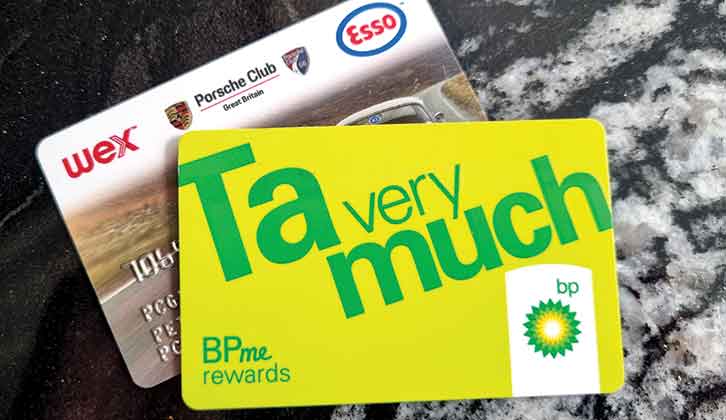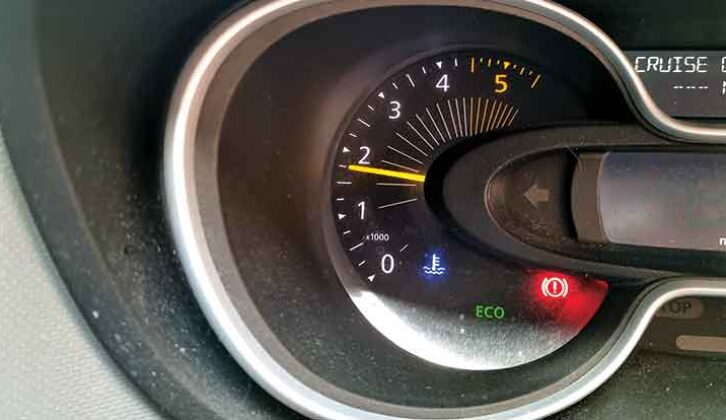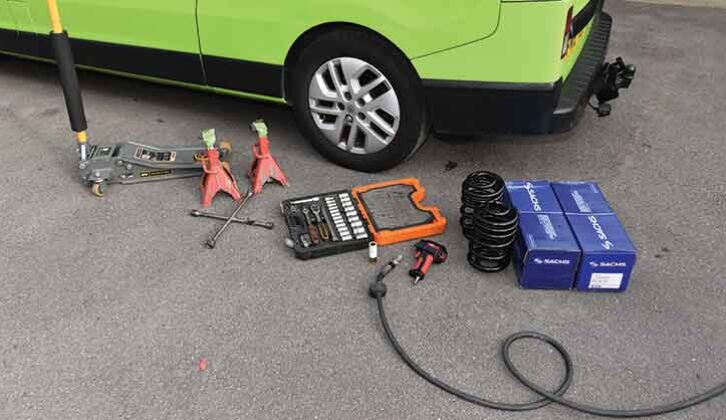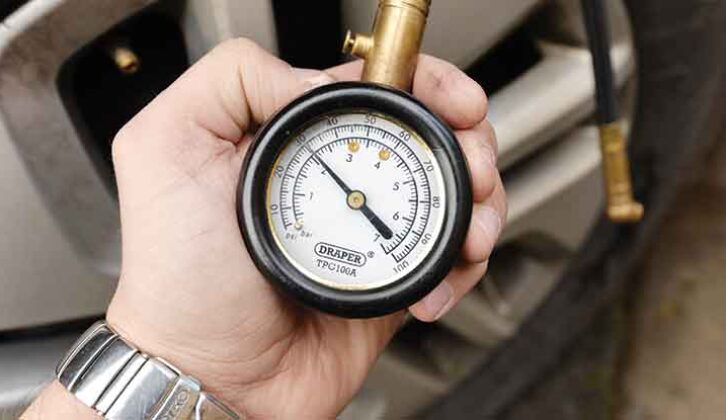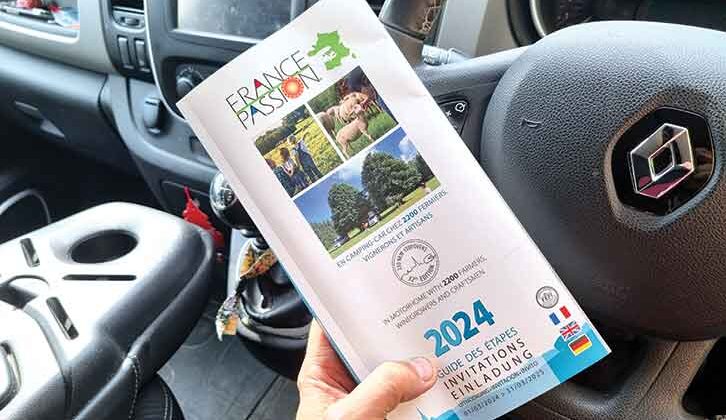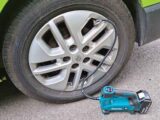If you have already invested in a motorhome, then you’re already winning the holiday value game, mainly thanks to their low levels of depreciation compared to a car.
The longer you keep the ’van, the lower the cost per year will average out, too. So if you typically replace your motorhome every three years or so, extending this period by a year or so will reduce your average yearly depreciation cost.
Clearly, other factors, such as the cost of finance and interest rates, are also in play when you’re making these calculations, but you take the point.
Choosing a motorhome
If you’re thinking of buying a new motorhome, the key thing to look for is the design of the body. The larger the frontal area of the vehicle, the worse its economy tends to be. So taller vehicles almost always deliver worse economy than low-profile motorhomes.
I can speak from experience on this aspect – I was involved in economy testing a group of motorhomes a few years ago, and the bodyshape had by far the most significant effect on their economy, much greater than engine size or gearbox type.
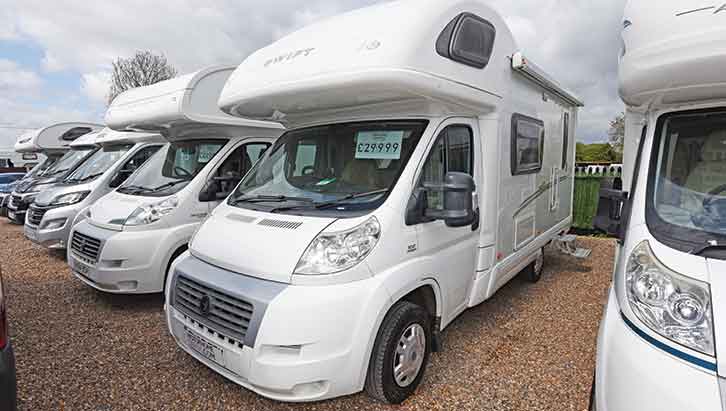
So for the best economy, look for the lowest-profile model you can find. The engine choice should be secondary – in real-world testing, we found that lower-power engines tend to need more revs on the motorway or when ascending hills, and engine revs have a direct correlation with economy.
Equally, modern automatic gearboxes have less of an effect on economy than you might actually imagine. In addition, their ease of use will make them highly desirable on the secondhand market, so they can also help with resale values.
Bear in mind that European-style layouts – such as bunks, and A-class motorhomes with single lounge chairs and an office-style fixed dining table – tend to be less popular with UK customers, so are likely to retain less value than others.

Resale might not be something that you consider closely during the excitement of the buying process, but it does have a direct bearing on your overall costs, so you do need to keep it in mind.
When you are deciding between two different motorhome layouts at your budget, it’s always wiser to opt for the one that will sell better down the line.
Declutter your ’van
If you own one of the best motorhomes, chances are you’ll keep it for a long time. As a result, it will probably be filled it with all manner of clutter.
Motorhome garages are magnets for unwanted items, which seem to gather in all the hard-to-reach crevices, and the larger the vehicle, the more temptation there will be to hoard stuff.
So if you haven’t decluttered your motorhome in over a year (or ever!), now’s the time – you can make it a part of the motorhome cleaning routine. This is a good exercise to do on an annual basis – over winter before the start of the main season is ideal – so you can ditch any items that haven’t recently been used. If something hasn’t been used within the past year, leave it at home or sell it on.
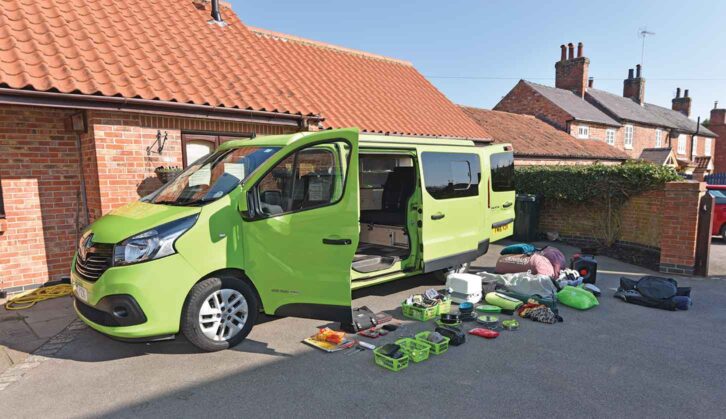
You’ll be surprised by what you find when you sort through your gear in this way. In our previous motorhome, we hadn’t emptied the garage for quite a while and when we were clearing out the ’van to sell it, I discovered a burst inflatable boat, several punctured beach balls and a broken chair. All of which we’d carted around for 5000 miles.
Thinning out clutter has a twofold effect. It reduces the overall vehicle weight, which benefits motorhome fuel economy, but also allows you to consider what you pack and only carry really useful stuff. Leave that cast iron waffle-maker at home where it belongs!
Fuel costs
After vehicle depreciation, by far the biggest cost of running a motorhome comes from the fuel you put into it.
Clearly, if you only tour locally, you can reduce your fuel costs, which we have seen happening post-Covid and while we are all having to deal with the consequences of the cost of living crisis.
The biggest costs in terms of fuel economy are the price of the fuel itself, and your style of driving. Using a fuel app – such as PetrolPrices – is the best way to find the cheapest prices locally, and if you aim to refuel when you’re passing a chosen location, rather than making a detour to fill up, it’s the most economical way to do so.
Fuel prices vary far more than you might expect – for example, there was a 10p difference between the highest and lowest prices in my area, and for my Renault Trafic’s 80-litre fuel tank, that can mean a saving of up to £8.
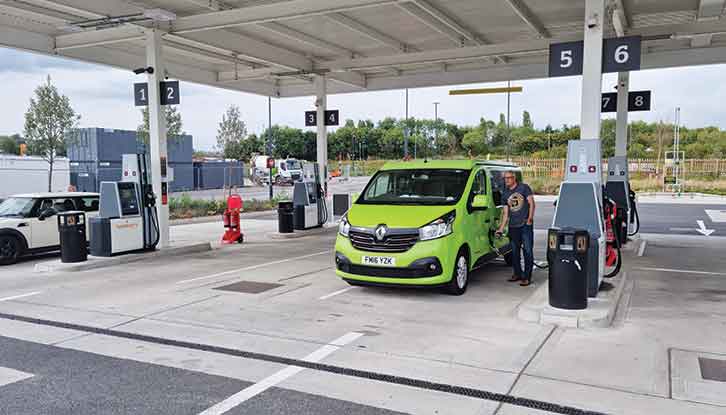
However, always bear in mind that if you have to travel any distance specifically to refuel, you wipe out this saving, so only fill up when you’re passing.
It’s also worth using a petrol prices app when you’re touring, and to try to avoid filling up on the motorway, where prices can be eye-wateringly expensive – up to 30p a litre more. On a typical 80-litre fill-up of diesel, that works out at £24 more than a cheaper retailer like a supermarket – a significant increase.
One old chestnut that often surfaces is that supermarket fuel is in some way ‘inferior’. This is utter nonsense – all of the fuel comes from bulk wholesale refineries, which are largely shared by all of the fuel retailers. So anyone claiming this is simply wrong – all fuel has to meet a British Standard and will be fine for your vehicle. The only variation is the detergent and additive package that different fuel retailers add – premium fuels have more of these additives.
Another point to note is that all of the branded fuel suppliers offer some form of loyalty card and these are generally worth going for.
It’s far better if you use the app on your phone for these, to avoid filling up your wallet or purse with a wad of plastic. Or just keep all the cards in the motorhome if you’re old school!
Most of the loyalty cards do not offer great discounts and won’t make a big impact on fuel costs – for example, the Shell Go Plus card gives me around £2 for every 10 fill-ups. Ten fill-ups are typically £1000, so this is only a 0.2% discount. You generally save more by shopping around locally.
If your local filling station has Nectar points, that can give you additional savings on shopping, so this is a fringe benefit of where you refuel.
Another cheap place for buying fuel is Costco – if you live near one of their stores, and you’re eligible for membership, get yourself a card. As I write this, our local Costco had fuel for sale at £1.42 a litre, easily undercutting the local supermarkets by a few pence a litre.
Your driving style
After you’ve reduced your fuel costs, you then need to reduce the angle of the throttle pedal – this can be a great motorhome driving tip to follow. Driving style greatly influences fuel use and the key factor is to keep the instances of full throttle to a minimum. Some suggest accelerating at full throttle to reach a set speed limit is the best method, while others favour gentle acceleration for longer.
Equally, reducing the engine revs on motorways by reducing speed slightly is another method. Just dropping from 70mph to 65mph makes a difference in economy over a few hundred miles.

The most economical speed is usually a constant speed you can keep up and down hills without having to drop a gear or accelerate – it varies for every engine, so you need to find the sweet spot for your particular vehicle.
Extreme economy drivers take things to the limit, slipstreaming lorries and trying to reduce pressing the brake pedal to maintain a constant speed; this might be a step too far for most people, and could cause problems if you don’t know exactly what you are doing.
Insurance costs
After fuel, one of the biggest fixed costs is your insurance.
Any forum question that starts off with “What’s the cheapest insurance company?” is barking up the wrong tree and asking the wrong question. The firm that is cheapest for Driver A is not necessarily going to be cheapest for Driver B – we live in different areas and represent different risks.
Cost isn’t the only factor – the level of cover is equally important. This is especially the case if you are using a comparison site, where some policies might have stripped out bare-bones features (for example, not having European cover or cover for any other vehicle third party is now common).
One tip with insurance that might work is to be disloyal – if you’ve stuck with the same provider for a couple of years, you might now be paying too much. Shop around – both on the phone and on comparison sites – about two or three weeks before the renewal is due and see what you can find (you may, of course, discover that your currrent provider is still the cheapest overall).
Make sure you ask about all the key features – protected no-claims cover, excesses, windscreen cover (especially for an A-class), EU cover, legal expense protection and so on – so that you’re comparing like with like.
Sometimes the best deal is online, sometimes it’s found after a phone call, so yes, you are going to have to spend some time (perhaps fortified by your preferred beverage) repeating the info over the phone. But it’s definitely worth going through the donkey work to find the best deal on the cover that’s right for you and your motorhome.
Servicing costs
If your vehicle is now out of factory warranty, you can save on main dealer prices by using a local garage for basic maintenance procedures – the regulars like the oil and filter changes, air filter changes, brake fluid flush and brake pad/disc replacement.
They will also be able to source good quality aftermarket parts. For example, firms like Textar, ATE and Jurid make a lot of the brake pads for the OE makers, but sell them for a fraction of the main dealership price.
Companies such as Euro Car Parts and Autodoc are also a good source of excellent-quality aftermarket parts.
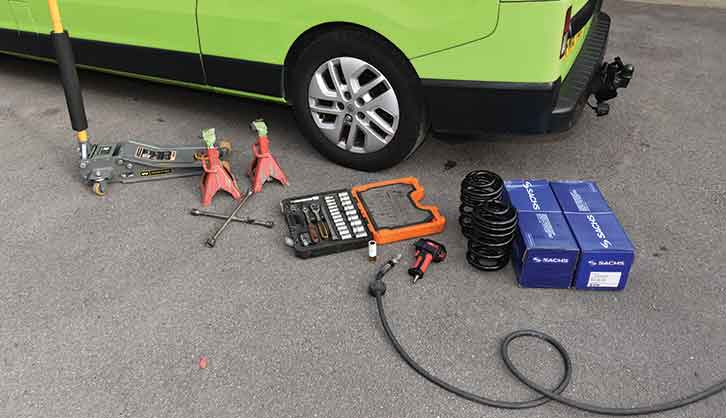
Simple DIY work can be economical, too. So if you are handy with the spanners, you could save even more money by working on your vehicle yourself – I’ve done all of the brake discs/pads and suspension dampers/springs on my Renault Trafic for less than half the cost of using the local garage to fit them. Obviously, you need to factor in your time and effort – not everyone likes getting oily – and make extra sure that you know what you’re doing, for safety’s sake, before carrying out any motorhome maintenance tasks.
Tyre management
The key thing with tyres is to ensure you always stay on top of the pressure. Tyres naturally lose pressure and if you only check them a couple of times a year, you’re probably running on too low and increasing drag on the road, reducing the tyre life and increasing your fuel costs into the bargain.
People on forums who say that “It doesn’t do the same economy as it used to!” possibly haven’t checked their tyre pressures in a while. Once a month is a good habit to get into.
Setting motorhome tyre pressures is slightly different to cars, because you have to know the vehicle’s touring weight. So you always need to visit a weighbridge, get accurate individual axle weights and then adjust the pressures to suit (find out more by contacting your brand of tyre company).

The European Tyre & Rim Technical Organisation usually recommends motorhomes to run at the maximum pressure stamped on the sidewall. While this will give you the best economy, it might also rattle your fillings out!
The other thing to consider is the tyres themselves. Motorhome makers tend to supply good branded tyres with their conversions and when it’s time to replace them, it’s tempting to go for budget models. The market is currently flooded with cheap random brands of tyres from overseas suppliers.
While these might save you a couple of hundred pounds a set, they rarely last well and tend to perform poorly over their lifespan. If they last half as long as branded motorhome tyres, they can actually work out more expensive in the long run. Throw in their often poorer wet-weather braking distances and you can see why it’s usually better to go for a well-known name.
Brands such as Michelin test their tyres to keep performing at their optimum level even when they’re partly worn, and the premium makers put a lot of clever engineering into their tyres.
Join a touring club
So far, we’ve been focusing entirely on the vehicle costs – mainly because they’re the biggies – but you can also reduce your costs when you’re pitching up at one of the best campervan sites.
Food and drink are an obvious win, and stocking up at a local Lidl or Aldi supermarket close to your campsite helps to keep costs down. In France, some of the hypermarkets have great bargains, too. However, you’ll know about these savings already, because we’re all savvy shoppers post-Covid!
It’s the campsite fees that you can reduce. We would recommend joining the Caravan and Motorhome Club and The Camping and Caravanning Club, in particular to take advantage of their members-only Certificated Locations and Certificated Sites. These small, privately owned, five-pitch sites offer back-to-basics camping at low costs – although many are quite posh these days – and a great holiday for just a fraction of the price of an all-singing, all-dancing, resort-style campsite.

It’s also worth taking a look at other camping and touring schemes, such as Practical Motorhome’s Nightstops, which lists low-cost overnight stops across the UK.
And if you’re heading off to tour in France, get yourself a copy of the France Passion stopover guide. Updated annually, it costs around £29 and allows you to stay overnight for free at selected sites, on the understanding that you might buy something from the place where you spend the night. (Many of these locations are vineyards, so that’s rarely going to be a problem!)
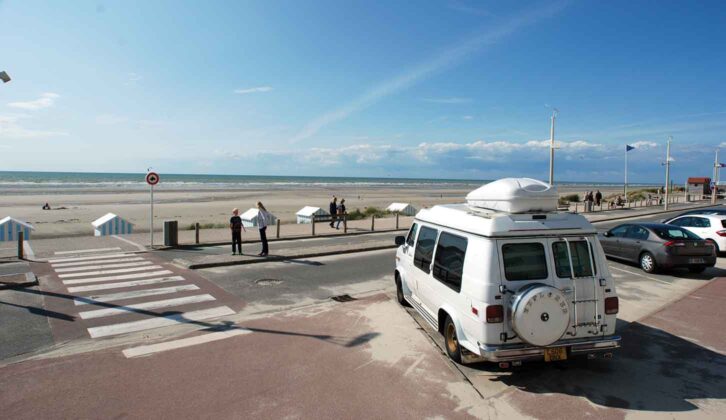
In practice, they’re a great lucky dip – we’ve stayed at an amazing lakeside oyster farm and a woodland brewery, for example. A brilliant way to save money and have fun – which is surely what motorhomes are all about!
Also in France, you might consider staying on the extensive aires network (in towns and villages, rather than on the autoroute – we would not recommend staying overnight at the latter).
Are you looking for a club to join as well? Our guide to the various motorhome owners clubs will be a great place to start, as we outline exactly what each one offers its members.
This article is based on information in June 2024 and is intended as a general overview of financial questions and issues. Any references to specific products are for illustration only and not intended as any form of recommendation. Future Publishing Limited, the publisher of Practical Motorhome, provides the information in this article in good faith and makes no representation as to its completeness or accuracy. Individuals carrying out the instructions do so at their own risk and must exercise their independent judgement in determining the appropriateness of the advice to their circumstances and skill level. To the fullest extent permitted by law, neither Future nor its employees or agents shall have any liabilityin connection with the use of this information.
If you’ve enjoyed reading this article, why not get the latest news, reviews and features delivered direct to your door or inbox every month. Take advantage of our brilliant Practical Motorhome magazine SUBSCRIBERS’ OFFER and SIGN UP TO OUR NEWSLETTER for regular weekly updates on all things motorhome related.





